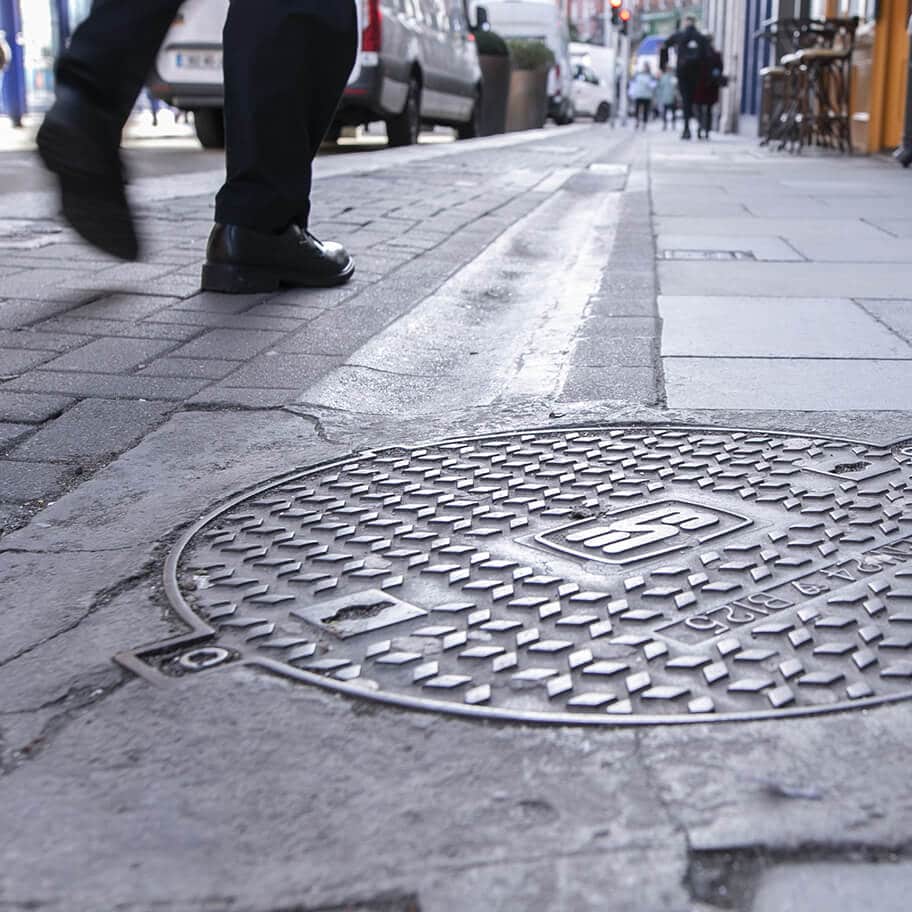Who Can Sustain Injuries?
Most of the time, it is pedestrians who are involved in these accidents but they can also cause damage to vehicles and in some cases, drivers can sustain injuries. It is not uncommon for an employee to injure themselves due to an uncovered manhole or drain where adequate warning signs were not present. If you have sustained an injury following an accident it is important that you seek medical attention as soon as possible as your medical records will be needed when pursuing legal action.
Who is Liable?
When making any kind of personal injury claim it is important to determine who is liable for the cause of the accident. Following an accident in a public place, it is likely that the local Council or Authority is responsible for the cause where the accident happened in a public place. Councils and local authorities may be held liable in cases where it can be proven that they did not adhere to the duty of care expected of them. They should ensure that they are regularly maintained and check for any potential hazards or issues. Failing to do this may be seen as a breach in their duty of care.
It is important to note that if you have sustained an injury on privately-owned land, it is the responsibility of the occupier of the property to ensure that there are no potential hazards which could cause an accident to occur. If it is found that the accident happened as a result of negligence on their part then they will be seen as liable for the accident under the Occupiers’ Liability Act.
If you sustained injuries throughout the course of your work it is likely that your employer may be found liable as they are responsible for your health and safety while at work.
Occupiers’ Liability
The Occupiers’ Liability Act 1995 states that the occupier of premises owes a duty of care towards any visitors. They should show a reasonable duty of care to ensure that they maintain the premises so that health and safety is the number one priority. They should put necessary precautions in place to make sure that nobody sustains an injury on their property. All occupiers are required to carry out regular maintenance within the boundaries of their property so as to reduce the chances of an accident occurring and to ensure that the site is safe and free from defects. This is known as occupiers’ liability. If an occupier has acted in a negligent manner which has led to the cause of the injury then a claim can be made against them.
All landowners are expected to be aware of any potential hazards and dangers. There should also be necessary precautions in place on how to act on any issues that may arise. If an occupier has failed to maintain a safe environment then they are likely to be seen as liable. It is important to note that, in any case, if it is found that the injured person contributed to the cause of their injuries, through contributory negligence, then they may not be eligible to make a claim.
Common Injuries
Causes
Improperly Placed Covers
Covers which are incorrectly placed are a common cause of trip and fall accidents. It is important that these covers are checked regularly to reduce the chances of an injury being sustained.
Unsuitable Cover Surfaces
It is important that the correct covers are used to reduce the risk of accidents occurring involving both pedestrians and vehicles. If an unsuitable cover is placed on the drain or manhole it is more likely that an accident will occur as the cover will not do the job intended.
Open or Unmarked Covers
Open drain or manhole covers are the leading cause of this type of accident as people may not be aware of the potential hazard unless they are clearly informed of this. If there are any unmarked or open covers, people should be advised of this. It is important that clear signage is used and that people are given notice of this in good time.
Raised Cover Surfaces
Raised surfaces are a common hazard associated with trip and fall accidents. People are unlikely to see this small step and may trip and fall leading to injuries being sustained.
Poorly Maintained Covers
It is up to either the Local Council or land owner to keep up the maintenance of drain and manhole covers. If they are poorly maintained they are likely to become rusty and become a potential hazard to pedestrians.
What to do after an accident in a public place*?
Following an accident in a public place, there are a number of steps you should follow:
-
Seek medical attention
Your health is your wealth and should be your first priority. Immediately after a public place accident, take a second to assess yourself to determine if you have any injuries and seek the relevant medical attention. If you have sustained a serious injury ensure that you contact an ambulance to attend the scene.
For minor injuries, you must remember that minor injuries where you ‘feel fine’ could progress to a more serious injury in the future. In this case it is always better to be safe than sorry and advisable that you go to your nearest accident and emergency (A&E) or local GP to be checked out.
-
Report the accident
If you have an accident in a public place it is important to report it to the persons who are in charge of the upkeep of property.
Examples of such are:
-
Identify any witnesses
If possible, try to collect the contact details of anybody that witnessed the accident. This may be of good use if you do decide to pursue a public place accident claim. It is also useful to find out if there is any CCTV in the area where the accident happened.
-
Document the incident
It is important that you collect all the relevant information in connection with your accident:
- How the accident happened
- Details of any witnesses
- If there are any CCTV recordings of the accident
- Take pictures of where the accident happened and what caused you to slip, trip or fall
-
Speak to a public place accident solicitor
If you are considering moving forward with a public place accident claim for any personal injuries sustained it is advisable that you speak with a public place accident claims solicitor as soon as possible. If you are proceeding with a claim, the first step will be submitting your claim to the Injuries Board for assessment. A public place accident solicitor can help you in preparing your application to the Injuries Board and ensure that you follow the process in the correct format, meaning that you can move forward with your claim quickly without unnecessary delays.
It is important to remember to keep copies of any expenses that you have incurred as a result of the accident. It is also imperative to retain copies of medical reports or incident report forms where possible as you will need them when making a claim.

